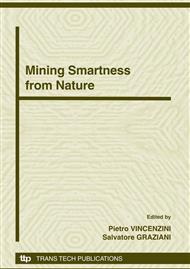p.54
p.60
p.66
p.72
p.78
p.85
p.91
p.97
p.103
Bioelectronic Detection Schemes for Biomedical and Environmental Sensing
Abstract:
An artificial nose or tongue could be a real benefit at times: this kind of biosensor could sniff or taste out poisons, explosives or drugs, for instance. The senses of living organisms function using various mechanisms, among other things utilizing membrane proteins as receptors. Membrane proteins have several important functions in the cell, one of which is to act as receptors, passing on signals from molecules in the air or liquid, for example, to the cell interior. This article is focusing on the functional coupling of biological signal processing and recognition elements with micro- and nanoelectronic semiconductor devices and circuits for the development of future biosensors and molecular diagnostics tools.
Info:
Periodical:
Pages:
78-84
Citation:
Online since:
September 2008
Price:
Сopyright:
© 2008 Trans Tech Publications Ltd. All Rights Reserved
Share:
Citation:


